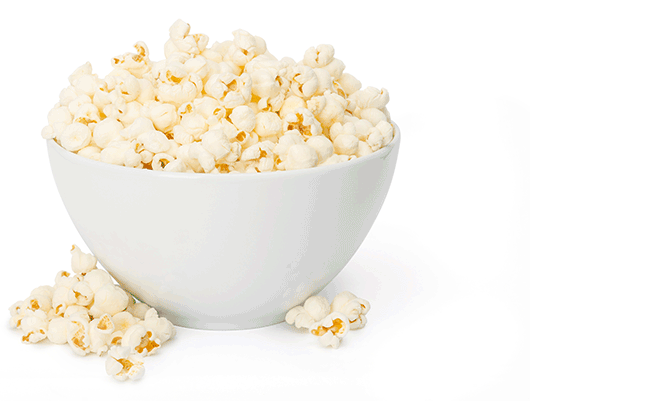Popcorn is a whole grain food—which makes it a high-quality carbohydrate source that is not only low in calories, but a good source of fiber.
 Whole grains get two thumbs up from the United States Department of Agriculture (USDA) and Department of Health and Human Services (DHHS) in their guidelines for healthier lifestyles. Dietary Guidelines for Americans 2020-2025 provides information and advice for choosing a nutritious diet. Among its recommendations is to focus on consuming nutrient-dense foods, like fruits, vegetables, and whole grains.
Whole grains get two thumbs up from the United States Department of Agriculture (USDA) and Department of Health and Human Services (DHHS) in their guidelines for healthier lifestyles. Dietary Guidelines for Americans 2020-2025 provides information and advice for choosing a nutritious diet. Among its recommendations is to focus on consuming nutrient-dense foods, like fruits, vegetables, and whole grains.
Whole grains contain the entire grain kernel—the bran, germ, and endosperm. Refined grains have been milled, a process that removes the bran and germ. This is done to give grains a finer texture and improve their shelf life, but it also removes dietary fiber, iron, and many B vitamins. Because whole grains keep their dietary fiber, they play a key role in keeping bodies healthy.
Studies have shown that whole grains may help reduce the risk of developing many major diseases including heart disease, cholesterol, diabetes, obesity and certain cancers. Whole grains are low glycemic carbohydrates which means lower blood sugar and less insulin production. Whole grains are a source of fiber, which grabs onto toxins as it makes its way through the digestive system. Fiber also slows digestion, making you feel fuller longer.
 Today’s new health guidelines recommend at least half your daily intake of grains should come from whole grains; that is, try to eat at least three servings of whole-grain products each day.
Today’s new health guidelines recommend at least half your daily intake of grains should come from whole grains; that is, try to eat at least three servings of whole-grain products each day.
Three cups of popcorn counts as 1 ounce equivalent whole grains.
If hunger strikes and mealtime is hours away, grab a whole grain snack like popcorn to stop those pangs while supplying your body with needed nutrients.